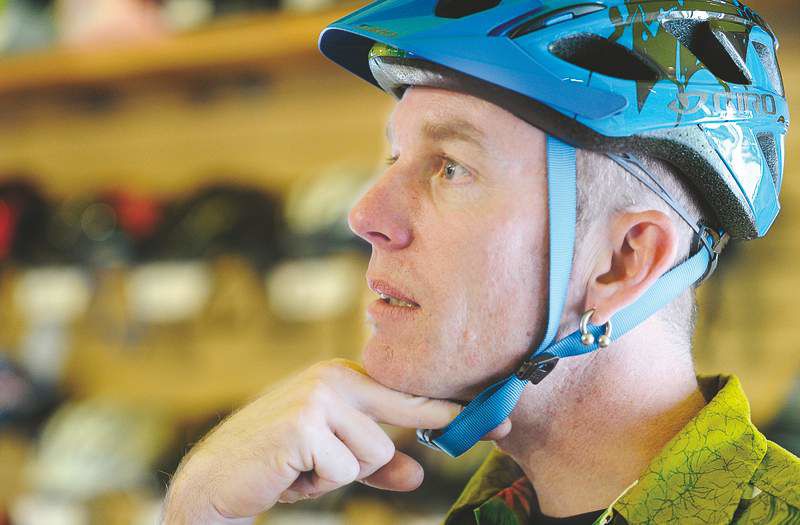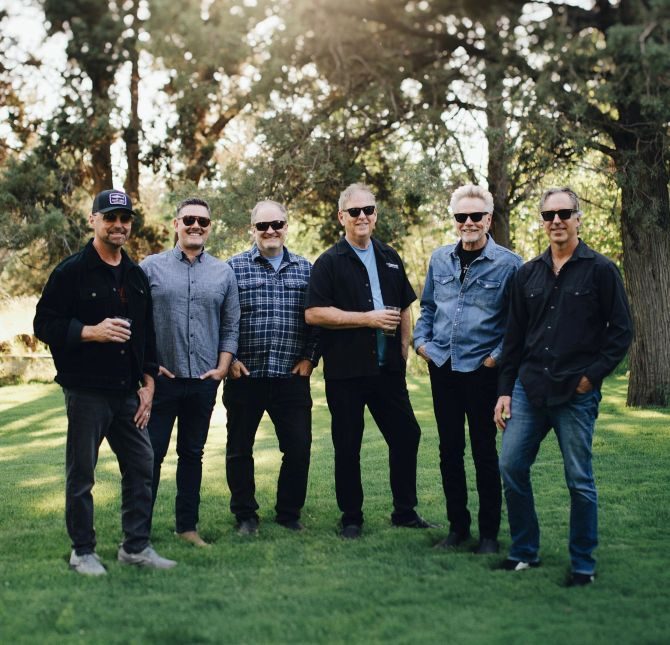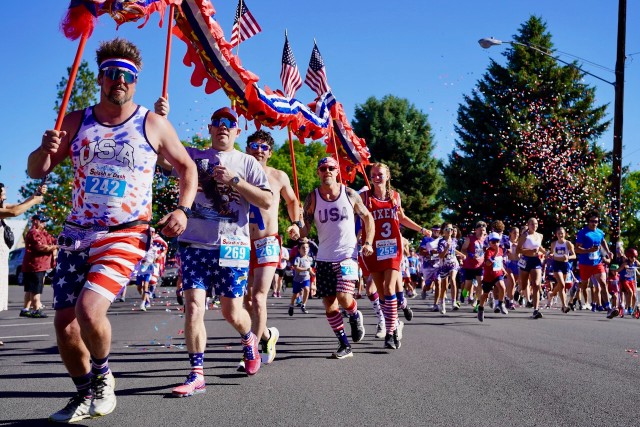Finding the right cycling helmet
Published 5:00 am Monday, October 8, 2012

- Mark Campbell, manager of Pine Mountain Sports in Bend, demonstrates that a rider should be able to put two fingers between the bottom of the chin and the chin strap.
It is a common sight these days, especially in bike-happy Central Oregon.
The bicycle helmet.
In fact, it is difficult, at least in Bend, to go more than a day without seeing a cyclist and, usually by extension, a bicycle helmet — a piece of safety gear that well could prevent serious injury in case of an incident in which the head would otherwise meet ground or another hard object.
“If you fall off your bike and you hit your head, those head injuries may never heal,” noted Brad Boyd, owner of the Eurosports bicycle shop in Sisters. “You may never be the same again.”
By Oregon law, helmets must be worn by children age 15 and younger riding or being carried as a passenger on a bicycle. While helmets are optional for riders 16 and older, many adult riders opt to wear them.
But a helmet will do little good if it does not fit properly or if has lost effectiveness due to aging or damage. So it might be time, especially if it has been a while, to give that brain bucket a close examination or consider purchasing a new one.
Helmets come in numerous styles, sizes and colors, and they tend to differ based on the cycling discipline: Mountain bike helmets may come with a (sometimes removable) visor, for example. Commuters, recreational riders and cyclists who do lots of jumping on their bikes may opt for a skate-style helmet that somewhat resembles an equestrian helmet. Many BMX riders opt for full-face-style lids that resemble motorcycle helmets. And while that aero helmet, with its distinctive asymmetrical teardrop shape may look cool, it is not practical to wear except by time trialists and triathletes who spend a lot of time riding in an aerodynamic position.
Even though some mountain bike and road helmets may appear similar, especially if that visor comes off, cyclists who ride both disciplines may want to consider owning both types of helmets.
Mountain bike helmets may drop down lower on the back of the head to provide more protection, Boyd observed, and mountain bike helmets are designed so that they ventilate better at lower speeds, road helmets at higher speeds.
Whatever helmet is used, proper fit is crucial. Last week Mark Campbell, manager at Pine Mountain Sports in Bend, described how a bicycle helmet should fit. It should fit snugly, he said. Once the dial on the back of the helmet (a feature of many helmets that offers a more precise fit) is adjusted, the helmet, when unbuckled, should not come off when the rider bends forward. When the chin strap is buckled, the rider should be able to fit two fingers between the strap and the bottom of the chin.
Jeff Monson, executive director of the Bend nonprofit Commute Options, also offered some tips. The helmet, he said, should sit down on the rider’s forehead.
“You put your two fingers above the eyebrow, and the bottom of the helmet should touch (the top finger),” Monson said. He also explained that riders can use two fingers to make a “v” and place them so that one finger rests just in the front of the ear and the other just in back, with the bottom of the “v” touching the bottom of the ear lobe. That models how the straps that run along the sides of the face should fit.
The cost of a helmet can vary wildly, from about $40 to well more than $200. But price does not determine safety level.
“They all have to meet a certain safety standard,” Campbell explained. “It doesn’t matter if you’re paying $40 or $140 or even $200. They’re still going to meet the same safety standard.”
Helmets come with a sticker inside that states their certification. In the United States, two agencies that certify bicycle helmets are the Consumer Product Safety Commission — whose certification is required by law — and the Snell Memorial Foundation. Snell uses more stringent standards, Boyd said, but all certified helmets are safe.
So when is it time to purchase a new helmet?
That depends. Campbell noted that sweat and sun over time can cause a helmet to deteriorate. He recommended replacing a helmet after three to five years and inspecting helmets in direct sunlight, looking for fractures and pulling on a helmet to check the amount of flex. (Jane Quinn, a sales associate and buyer for Pine Mountain Sports, said helmet manufacturers recommend riders replace their helmets every five years. So riders sporting helmets older than that recommendation might want to consider purchasing a new lid.)
Where that three-to-five-year recommendation changes is if a helmet endures a significant impact.
“If you have an impact, if you crash and fall on your head, new helmet,” Boyd said. “It doesn’t matter if it’s a month old or 5 years old, that’s helmet time. You crash, you replace your helmet. The way the foam is designed in the helmet … they can absorb one hard impact.”
So be kind to that noggin and buckle up. You never know when donning a helmet could save you from serious injury — or worse.
“It’s not just if you’re racing,” Monson said. “It can be a short ride to the grocery store or to school, of course, or wherever you’re going … but every time you ride your bike, you should be wearing a helmet.”
More info
For information on bicycle helmet safety standards in the United States, see the websites of the Consumer Product Safety Commission (cpsc.gov), the Snell Memorial Foundation (smf.org/home) and the Bicycle Helmet Safety Institute (bhsi.org).








